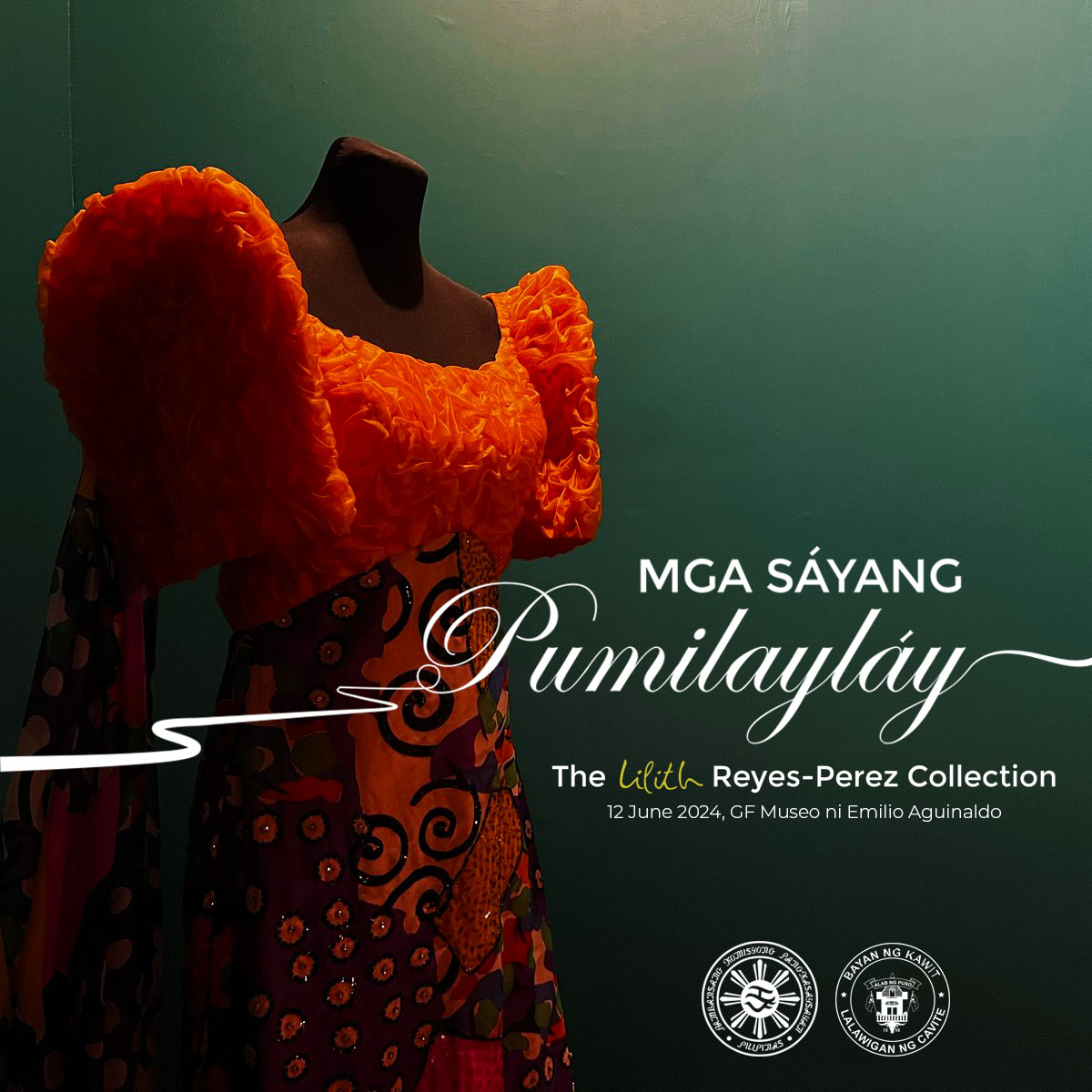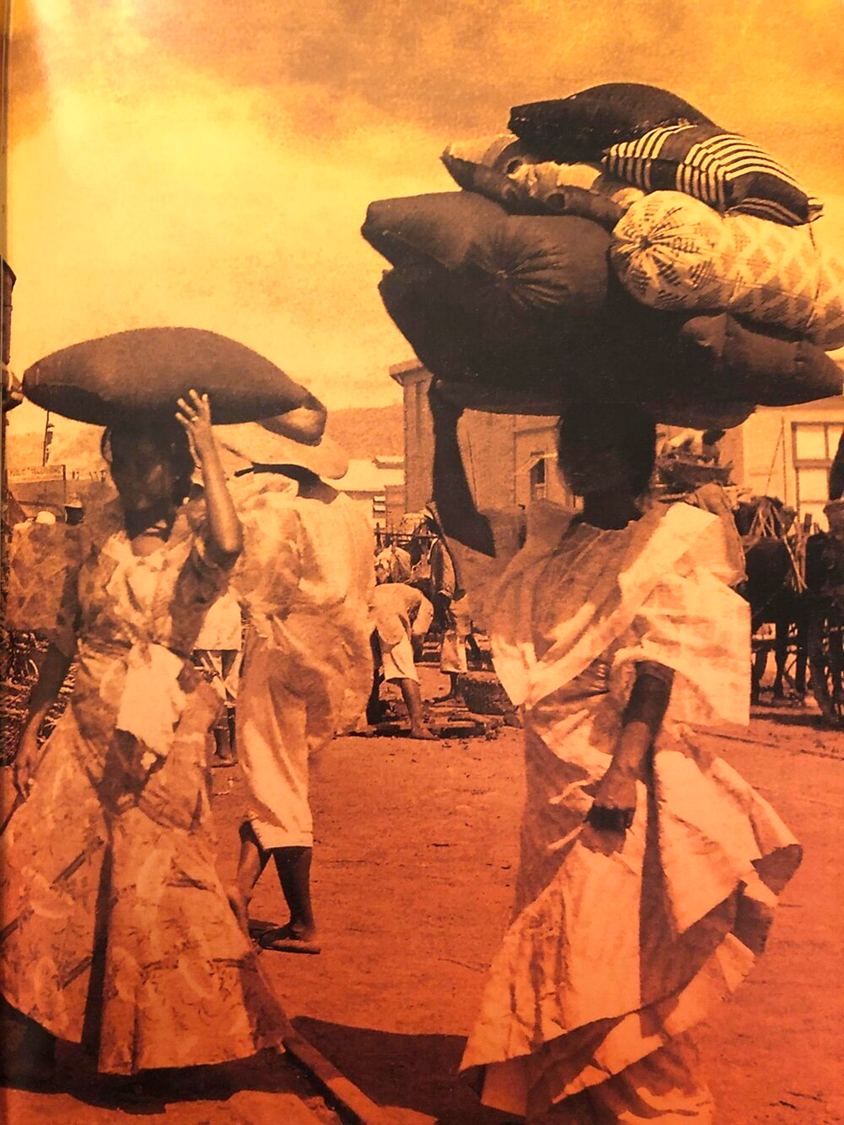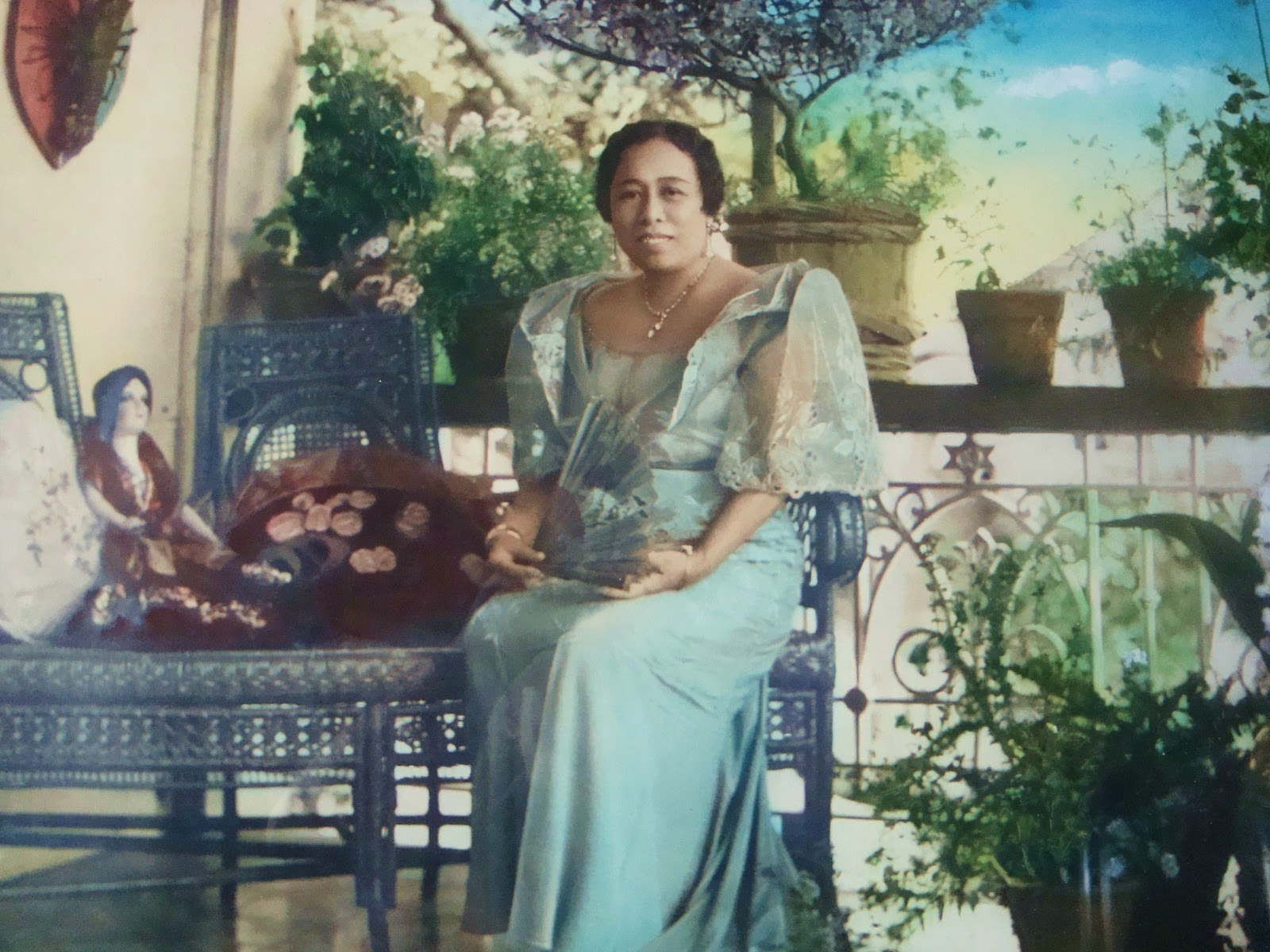Of the many celebrations of the 126th Anniversary of Philippine Independence, our attention was captured by the poster of NHCP Museo ni Emilio Aguinaldo and the Municipality of Kawit event - "Mga Sáyang Pumilayláy: The Lilith Reyes-Perez Collection".
The exhibit which opens on the 12th of June 2024, at the Aguinaldo Shrine posted this promotional pitch - an instant draw for wonder | wander | women.
 |
| opening on Independence Day 2024 |
As its hemline once danced the rigodon, it now emerges gently on the floor of the House of Independence, asserting once more its role of redefining beauty and femininity to embody history and the interplay between individual expression and tradition.
Saya is used here in reference to the traditional Filipina long skirt that was the precursor of the terno. Mga Sáyang Pumilayláy — the exhibit title, refers to the dresses or skirts on display in the collection.
Even if in truth the terno is the least favorite Filipina dress choice for us - with all its burgis association, Imeldific appropriation and often fraught history of colonization.
 |
| a tour thru 500 years of this Filipino attitude |
In an essay on the politics of dress, Mina Roces wrote, "The iconography of the People Power 1 Revolution in 1986 was dominated by the
images of two powerful women: First Lady Imelda Marcos, resplendent in her terno
(national dress with butterfly sleeves), and opposition presidential candidate Corazon
Aquino, the widow in yellow.
 |
| how the terno took shape |
The contrast between the elegant First Lady in the national dress she had popularized and the housewife in yellow dresses problematized the tension between Western dress and national dress."
Independence Day 2024 magnifies the Filipino political problem. Why are we celebrating our independence when our lone dictator's son sits as our current president? Once again Philippine history is being whitewashed to cover the sins of the father and fictionalize the Marcos tall tale further.
 |
| image from Fashionable Filipinas |
The Philippine Folklife Museum in San Francisco describes the terno thus, "The seamlessness is only one of its inventive features. The sleeves are upright, flat against the shoulders like clipped butterfly wings, the low neckline contours the bosom and the whole dress is nipped at the waist to let fall a shapely skirt that is rounded, flared or trailed at the hem."
It could well be the Imelda Marcos classic description for the trumped up sort of legacy she wishes to foist upon the world. As she grows frail in old age the family's desperation to give mommy what she demands has only grown more blatant. May they never find the foothold to dig in on our precious fertile soil.
 |
| Maria Reyes Agoncillo-Aguinaldo, Gen. Aguinaldo's second wife |
NOTE: Mga Sáyang Pumilayláy is an exhibition of Reyes-Perez ternos coming into full circle - from the Liwasang San Miguel in Marilao, Bulacan to the ballrooms of the Westin Philippine Plaza, and presently, at the historic grounds of the Aguinaldo Shrine.


No comments:
Post a Comment
Note: Only a member of this blog may post a comment.